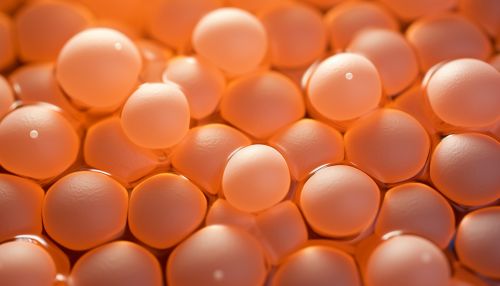Saccharomyces boulardii
Introduction
Saccharomyces boulardii is a tropical strain of yeast first isolated from lychee and mangosteen fruit in 1923 by French scientist Henri Boulard. It is related to, but distinct from, Saccharomyces cerevisiae in several taxonomical, metabolic, and genetic properties. S. boulardii is sometimes used as a probiotic with the intention of introducing beneficial active cultures into the large and small intestine, as well as conferring protection against pathogenic microorganisms in the host. However, in immunocompromised individuals, S. boulardii has been associated with fungemia or localized infection, which may be fatal.


Taxonomy and Nomenclature
Saccharomyces boulardii is a member of the Saccharomyces genus, which includes several species of yeast that are significant in food production, such as S. cerevisiae used in baking and brewing. The species was named after Henri Boulard who first isolated the yeast after he observed natives of Southeast Asia chewing on the skin of lychee and mangosteen in an attempt to control the symptoms of cholera. In terms of its phylogenetic position, S. boulardii is classified within the Saccharomyces sensu stricto complex, which includes closely related species such as S. cerevisiae, S. paradoxus, and S. pastorianus.
Physiology and Structure
S. boulardii is a unicellular, oval-shaped yeast. It reproduces by a process known as budding where a smaller daughter cell is formed on the parent cell. This yeast is considered a non-pathogenic, non-colonizing baker's yeast species; it does not attach to the mucosa and is eliminated after discontinuation of supplementation. It grows at a relatively high temperature (37°C), which is one of the factors that differentiate S. boulardii from S. cerevisiae.
Metabolism
S. boulardii, like other members of the Saccharomyces genus, is a facultative anaerobe, meaning it can grow in both the presence and absence of oxygen. It metabolizes sugars into carbon dioxide and alcohol. In the absence of oxygen, S. boulardii will undergo fermentation to produce energy, which is a characteristic feature of all yeasts. This yeast has a unique metabolic activity compared to other Saccharomyces species; it is not sensitive to antibiotics and can degrade bacterial toxins.
Medical Use
S. boulardii has been used in the prevention and treatment of various types of diarrhea. Its use as a therapeutic agent is based on the ability to maintain the balance of intestinal microbiota and its interference with the ability of certain pathogens to cause disease. It has been used in the treatment of acute gastroenteritis, antibiotic-associated diarrhea, Clostridium difficile infection, and Helicobacter pylori eradication. It has also been used in the prevention of side effects associated with Helicobacter pylori eradication therapy.
Safety
While S. boulardii is generally considered safe for use in healthy populations, there have been reports of fungemia in immunocompromised individuals or those with a central venous catheter. Therefore, caution should be exercised when considering S. boulardii supplementation in these populations.
